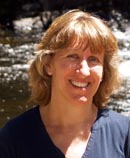 World experts on operating dams, including a leading Charles Sturt University (CSU) aquatic scientist, have called for bold leadership from lending institutions, national governments and dam owners and operators to substantially increase investment in and help implement sustainable dam siting, design and operations around the world.
World experts on operating dams, including a leading Charles Sturt University (CSU) aquatic scientist, have called for bold leadership from lending institutions, national governments and dam owners and operators to substantially increase investment in and help implement sustainable dam siting, design and operations around the world.The experts from USA, South Africa, China, Nepal and Brazil, as well as Australia. recently gathered for a three day workshop at UNESCO headquarters in Paris to develop a statement on ‘Sustainable Dam Planning and Operations’ in reaction to:
- increasing evidence of climate change and associated hydrologic uncertainty;
- increasing demand for water infrastructure development associated with population growth and changing consumption patterns; and,
- a pronounced shift in dam financing to sources that are not bound by the safeguards of institutions such as the World Bank and International Finance Corporation.
Titled “Challenges and Solutions for Planning and Operating Dams for Optimised Benefits”, the workshop was co-organised by Associate Professor Robyn Watts from CSU’s Institute of Land, Water and Society in collaboration with UNESCO International Hydrological Program and The Nature Conservancy.
Professor Watts says that decisions in siting, planning and operating dams need to be made over a river system, not just dam by dam. “We are looking for win-win outcomes, which include benefits for the society and the environment,” Professor Watts said.
“For example, through the application of innovative and integrative management approaches, it is possible to optimise hydropower, flood risk management, ecosystem protection, and food security (fisheries and agriculture) objectives.
The UNESCO statement also calls for:
- Exploring innovative alternatives for re-designing irrigation, power generation, and flood risk management systems to produce broader social and environmental benefits or reduce impacts.
- Evaluating alternative structural designs and operational plans for dams that can produce optimal performance across economic, social, and environmental values.
- Demonstrating dam planning across river basins to identify the best sites for new dams, as well as removing or rehabilitating existing dams, for maximum benefits.
- Evaluating ecological responses to hydrologic and physical changes caused by dams and the restoration of benefits attainable by changing the operation of existing dams.
- Analysing economic trade-offs between traditional benefits such as water supply, electricity and flood control and non-traditional benefits such as ecosystem services and riverine food production.
“There are other ways of operating dams and planning for dams that is more sustainable than what we have done in the past and are still doing,” Professor Watts pointed out.
“It’s not just theory as we have already demonstrated that it can be done. These practices need to be embedded in normal practices around the world rather than just in specific situations where individuals have pushed for it in their country or state or organisation.





Social
Explore the world of social